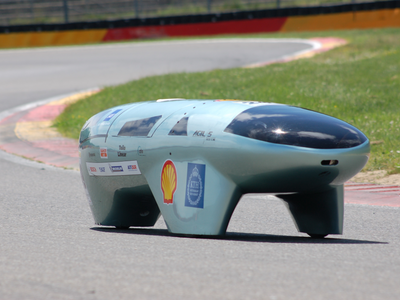Overview and review of physical fundamentals of Fluid dynamics. Boundary layers and vorticity. Fluid mechanics of aerodynamic bodies. Bluff body aerodynamics. Aerodynamic forces on road vehicles; their evaluation and possible strategies for their control. Design aspects of external and internal flows in vehicles. During the course seminars will be given on experimental and numerical methods in vehicle aerodynamics, aerodynamics of high-performance cars and aerodynamics of commercial vehicles.
SG2211 Vehicle Aerodynamics 6.0 credits

Information per course offering
Information for Spring 2026 Start 16 Mar 2026 programme students
- Course location
KTH Campus
- Duration
- 16 Mar 2026 - 1 Jun 2026
- Periods
Spring 2026: P4 (6 hp)
- Pace of study
33%
- Application code
60930
- Form of study
Normal Daytime
- Language of instruction
English
- Course memo
- Course memo is not published
- Number of places
Places are not limited
- Target group
- No information inserted
- Planned modular schedule
- No information inserted
- Schedule
- Schedule is not published
Contact
Course syllabus as PDF
Please note: all information from the Course syllabus is available on this page in an accessible format.
Course syllabus SG2211 (Spring 2025–)Content and learning outcomes
Course contents
Intended learning outcomes
The course is meant to give the students an introduction and an enhancement of their knowledge of fluid mechanics applied in the area of vehicle engineering. Different methodologies for the evaluation of the aerodynamic forces will be introduced. At the end of the course the students should be able to analyse and criticise present solutions and make an attempt of a good aerodynamic design.
Literature and preparations
Specific prerequisites
Completed courses in Basic Fluid Mechanics, at least 4 credits.
English B / English 6
Literature
Examination and completion
Grading scale
Examination
- PRO1 - Project, 3.0 credits, grading scale: P, F
- TEN1 - Examination, 2.2 credits, grading scale: P, F
- LAB1 - Laboratory Work, 0.8 credits, grading scale: P, F
Based on recommendation from KTH’s coordinator for disabilities, the examiner will decide how to adapt an examination for students with documented disability.
The examiner may apply another examination format when re-examining individual students.
If the course is discontinued, students may request to be examined during the following two academic years.
One written exam (TEN1; 2,2 credits), written project (PROJ; 3 credits), laboratory work (LAB1; 0.8 credits).
Examiner
Ethical approach
- All members of a group are responsible for the group's work.
- In any assessment, every student shall honestly disclose any help received and sources used.
- In an oral assessment, every student shall be able to present and answer questions about the entire assignment and solution.